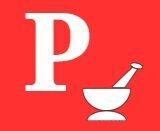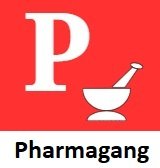Medical Device Rules 2016 were notified on 31.01.2017. The new Rules have been framed in conformity with Global Harmonisation Task Force (GHTF) framework. The salient features of these Rules are:
(1) Medical devices will, under the new Rules, be classified as per GHTF practice, based on associated risks, into Class A (low risk), Class B (low moderate risk), Class C (moderate high risk) and Class D (high risk). The manufacturers of medical devices will be required to meet risk proportionate regulatory requirements that have been specified in the Rules and are based on best international practices.
(2) Through these Rules, a system of ‘Third Party Conformity Assessment and Certification’ through Notified Bodies is envisaged. The Notified Bodies will be accredited by the National Accreditation Board for Certification Bodies (NABCB). The NABCB will, before accrediting Notified Bodies, assess their competence in terms of required human resources and other requirements.
(3) The Rules also seek to evolve a culture of self-compliance by manufacturers of medical devices and, accordingly, the manufacturing licences for Class A medical devices will be granted without prior audit of manufacturing site. Manufacture of Class A and Class B medical devices will be licenced by State Licensing Authorities concerned after Quality Management System audit by an accredited Notified Body. For all manufacturing sites, Quality Management System will need to be aligned with ISO 13485. Manufacture of Class C and Class D medical devices will be regulated by the Central Licensing Authority and, where required, assistance of experts or notified bodies will be taken. Import of all medical devices will continue to be regulated by CDSCO.
(4) Separate provisions for regulation of Clinical Investigation (clinical trials) of investigational medical devices (i.e. new devices) have also been made at par with international practices and, like clinical trials, these will be regulated by CDSCO.
(5) There will be no requirement of periodic renewal of licences. Accordingly, manufacturing and import licences will remain valid till these are suspended or cancelled or surrendered. Further, the entire process starting from submission of application to grant of permission/licence will be processed through online electronic platform. Timelines have been defined for most activities at the regulators end.
(6) These Rules envisage creation of a robust eco-system for all stakeholders including innovators, manufacturers, providers, consumers, buyers and regulators. vii. The Rules will provide a conducive environment for fostering India specific innovation and improving accessibility and affordability of medical devices across the globe by leveraging comparative cost advantage of manufacturing in India. The objective, transparent and predictable regulatory framework will boost the confidence of investors and, as a consequence, the quality and range of products and services will improve and business burdens will be reduced.

